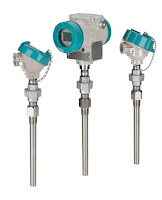A company in the southeastern United States produces and supplies beverage containers to a large number of bottling plants. The company produces a wide size range of polyethylene terephthalate (PET) bottles for both carbonated soft drinks and water. PET bottles are formed in a two-step process that includes both injection-molding and blow-molding equipment.
Challenge
The customer has a need to monitor the level in storage tanks containing crystallized PET plastic pellets used in the production of plastic soft drink bottles. The crystallized pellets range in density from 30 pounds per cubic feet to 56 pounds per cubic feet, and the tanks can be up to 60 feet in height.
The level measurement is used for inventory control, and it is important to maintain material supply during production periods. Production needs to know if they will need to switch tanks if the inventory is running low.
The customer had been using a plumb-bob for the level measurements and had also tried ultrasonic level measurement instruments, from a different vendor, in the past. The plumb bob cable became a mechanical nuisance, and because of high dust levels, the customer had experienced periodic loss of echo using the ultrasonic level devices.
Solution
The local Siemens representative convinced the customer to install a trial unit of the SITRANS LR560 radar level transmitter. The LR560 transmitter provided a continuous, repeatable and low-maintenance level measurement solution. The SITRANS LR560 unit’s plug and play performance is ideal for most solids level measuring applications, including those with extreme dust and high temperatures.
Its unique design allows safe and simple programming using the intrinsically-safe handheld programmer without having to open the instrument’s lid.
Results
The customer tested the trial unit for almost a year, and because of their confidence in the reliability of the level measurements, the customer placed an order for an additional 9 instruments for use in their storage silos.
Benefits
Time savings: No maintenance required. Because the SITRANS LR560 radar transmitter is a non-contacting instrument, the risk of product contamination is eliminated and no extended delays are caused as when plumb-bob cables get caught or broken.
Improved process reliability: Continuous level measurement is a real time indicator of how much is in the silo. A plumb-bob cable getting stuck at a certain distance can lead to misinterpretation of the actual level. After the cable gets stuck, there is no level history prior to the last request on demand from the instrument.
Easier to use: The SITRANS LR560 transmitter was set up using the quick start wizard and no further tuning or maintenance is required.
Unique product features: The local user interface allows for ease of con-figuration and set-up. Since the customer is only using the removable, local display during setup, the custom-er can save money by moving the display from unit to unit as needed. The narrow, 4-degree beam angle enables reliable depth penetration into the silo and ignores potential silo wall interference.
About the SITRANS LR560 Radar Level Transmitter The SITRANS LR560 2-wire, 78 GHz FMCW radar level transmitter is used for continuous monitoring of solids in silos to a range of 100 meters or 328 feet. Its plug and play performance is ideal for most solids applications, including those with extreme dust and high temperatures to +392ºF. Its unique design provides safe and simple programming using the intrinsically-safe handheld programmer without having to open the instru-ment’s lid.
The SITRANS LR560 transmitter includes an optional graphical local display interface (LDI) that improves setup and operation using an intuitive Quick Start Wizard, and echo profile display for diagnostic support. Startup is easy using the Quick Start wizard with a few parameters required for basic operation. The SITRANS LR560 instrument measures virtually any solids material level up to a range of 328 feet.
To discuss this, or any process instrument application, contact
Ives Equipment by calling (877) 768-1600 or visit
https://www.ivesequipment.com.







